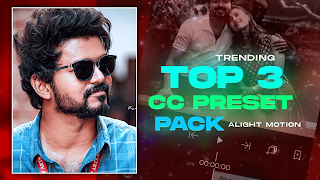Trending Soft Zooming Transition Tutorial
Introduction:
Today i'm going to show you how to zoom in Alight Motion, also you will see how you can create different zoom effects on your footage so when zooming into our footage it all comes down to using the scale parameter here in your effects controls.
So you can use the scale parameter to zoom in zoom out your clip you can also use your position parameter, your x value to move your clip left and right and your y value to move your clip up and down and you can reset any of these parameters, by hitting this arrow here and reset it back to the default values now one of the easiest ways to zoom in on a clip is to use what they call a punch cut or cut to close up and for this type of a zoom you don't need any key framing i have a clip here in the timeline.
Position:
i'm just going to move my playhead over, i'm going to make two cuts here on this clip hit c for the razor tool make one cut right there bring my head over and this is where i want my punch cut to end so i'll make another cut right here hit my v key to go back to my selection tool and then i'm going to select that middle clip
Add Keyframes:
i'm going to adjust my scale parameter and zoom in and i'm going to change my x and y values kind of center this and so as i play this back here is my zoom in or my punch, cut and now it's going to go back to the wide view and that's the easiest way to zoom if you don't want to use any keyframing, so now with this clip here we're going to zoom and we're going to use keyframes to enable keyframing come up to your effects controls, and if you're going to use position and scale together or one or the other you would click on the stopwatch right here and right away it creates default keyframes and if you move your playhead over.
let's say i want to scale this up and when i made a change to the scale at the position of my playhead it made another keyframe and if i play this back you can see it zoomed and the distance between the initial keyframes, and the last one is the amount of time it takes for your clip to zoom in and if you need to move your keyframes at the same time just highlight them and they both turn blue and you can move them back and forth to change your starting position or your ending position or your keyframing, now to help with a smoother zoom you can highlight in this case the first keyframes and right click and come down here to temporal interpolation and say ease out and you notice that your keyframes change shape.
i'm going to do this to my second keyframe and right click and say ease in so what we're doing here is we're actually creating a bit of acceleration, into the motion rather than to just abruptly starting and stopping so this should make it a little bit smoother looking played that back next to position,and scale if you drop down this arrow you see that your key frames have a graphical representation, and so you can grab these handles and these will give you more control over your zoom so if you want to zoom out it's basically the reverse so if i have my clip selected here and i'm going to click on scale and position to make my default keyframes.
Add Effects:
we're going to have a zoom and it's going to zoom in in the middle of two clips and it's going to have some motion blur, first you're going to come down here to the bottom of the project panel and click on this icon that's where it says new item and add adjustment layer and so i'm making sure that it is the same as my sequence and then drag that adjustment layer, over my clips that's the way it looks and put my playhead right in between the two clips and i'm going to select that adjustment layer and go into my effects and search for transform effect and i'm going to drop that on my adjustment layer.
Angle:
i'm going to make a couple of adjustments and come down here to my transform effect, and scroll down and uncheck to use composition shutter angle, and change that shutter angle to 360 this is going to create our motion blur in the transition now without moving the playhead i'm coming over to scale and i'm going to change the value to 300 and use my left arrow key and move my playhead back, three frames and i'm going to change my scale to 100 and so that created another keyframe there and i'm going to hit this arrow here that says go to next keyframe that's the first keyframe and then
Ending:
i'm going to use my right arrow key and move over one frame and then click add remove keyframe, i have a new keyframe there and then i'm going to use my right arrow key to go over five frames and then here's where i'm going to change the scale back to 100 and if you want you can change the position, of these keyframes to change your timing but here's the motion blur in our transition you want more tutorials like this click or tap on one of the videos on the screen now and remember, it's never too late to learn thanks for watching see you in the next video you



























